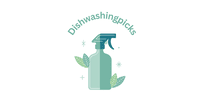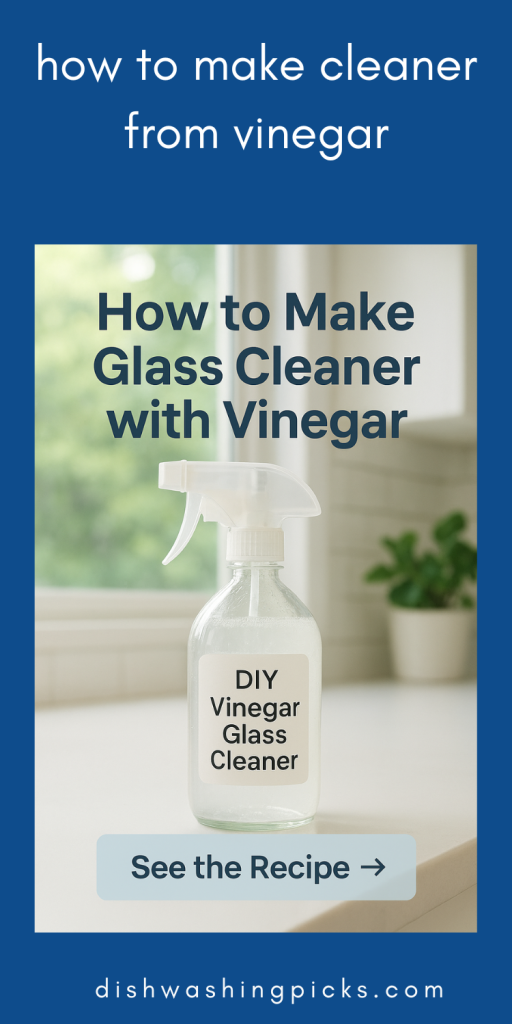Ever looked around your kitchen or bathroom and thought, “I wish there was a cleaning hack that actually works without chemicals”? That’s where vinegar comes in. It’s cheap, versatile, and surprisingly powerful at tackling grease, grime, and even streaky windows.
Imagine this: a simple spray bottle, a little vinegar, and suddenly your countertops, sinks, and mirrors are sparkling—without the chemical smell that makes you hold your breath. Sounds like magic, right? But it’s just science and a touch of creativity.
In this guide, we’ll cover:
- DIY all-purpose cleaners with vinegar and baking soda
- The right vinegar-to-water ratios for different tasks
- Special sprays for bathrooms, windows, and more
- How to add essential oils or dish soap for extra cleaning power
By the end, you’ll have a full toolbox of vinegar solutions that are safe, effective, and even a little fun to use.
Next, let’s start with the DIY all-purpose vinegar and baking soda cleaner—the classic combo everyone should know about.
DIY All-Purpose Cleaner: Vinegar + Baking Soda
You might have heard that vinegar and baking soda fizz like a science experiment—and that’s exactly why they work so well together. The fizzing helps lift dirt, grease, and grime from surfaces, making cleaning almost effortless.
Ingredients:
- 1 cup white vinegar
- 1 cup water
- 2 tablespoons baking soda
- Optional: a few drops of essential oil for a fresh scent
How to Use:
- Mix the water and vinegar in a spray bottle.
- Slowly add the baking soda (careful, it fizzes!).
- Shake gently and spray on countertops, sinks, stovetops, or bathroom surfaces.
- Let it sit a few minutes, then wipe clean with a cloth or sponge.
Pro tip: This is great for removing stains, deodorizing, and cutting through grease, but avoid using it on natural stone surfaces like marble or granite—they don’t love acid.
Once you’ve mastered this, the next step is knowing the right vinegar cleaning spray ratio for different surfaces and tasks.
Vinegar Cleaning Spray Ratio: Mix It Right
Getting the ratio right is like following a recipe—too strong, and you risk a strong vinegar smell or damaging surfaces; too weak, and it won’t clean effectively.
All-Purpose Spray:
- 1 part vinegar : 1 part water
- Works for counters, tables, and most washable surfaces.
Bathroom Spray (stronger for soap scum and mildew):
- 2 parts vinegar : 1 part water
- Ideal for sinks, tubs, tiles, and faucets.
Windows & Glass:
- 1 part vinegar : 2 parts water
- Gives streak-free shine when wiped with a microfiber cloth.
Pro tip: Add a few drops of essential oils like lemon, lavender, or tea tree oil to mask the vinegar smell and boost cleaning power naturally.
Once you’ve got ratios down, you can mix up your vinegar all-purpose cleaner—a simple, ready-to-use solution for daily cleaning.
Vinegar All-Purpose Cleaner: Simple and Effective
This is your go-to solution for everyday messes—counters, tables, sinks, and more. The beauty? It’s easy to make, safe, and doesn’t leave any toxic residue.
Ingredients:
- 1 cup white vinegar
- 1 cup water
- Optional: 10–15 drops of essential oil (like lemon or lavender)
How to Use:
- Mix vinegar and water in a spray bottle.
- Add essential oils for a pleasant scent (totally optional but nice).
- Spray on surfaces and wipe with a clean cloth.
- For tougher spots, let it sit 5 minutes before wiping.
Pro tip: This solution is safe for most surfaces, but avoid natural stone like marble or granite.
Now that you have your all-purpose solution, you might want a ready-to-go vinegar cleaner spray for quick touch-ups around the house.
Vinegar Cleaner Spray: Quick and Convenient
Sometimes you just want to grab a spray bottle and go—no mixing, no measuring. A vinegar cleaner spray is perfect for countertops, sinks, stovetops, and even small bathroom touch-ups.
Ingredients:
- 1 cup white vinegar
- 1 cup water
- Optional: 5–10 drops of essential oil for a fresh scent
How to Use:
- Combine vinegar and water in a spray bottle.
- Add essential oil if desired.
- Shake gently and spray on surfaces.
- Wipe with a microfiber cloth for a streak-free finish.
Pro tip: Keep a spray bottle in high-traffic areas—kitchen counters, bathroom sink, or near your desk—for instant cleaning power whenever you notice a spill or smudge.
Once you’ve got your spray ready, the next step is tackling bathroom-specific cleaning tasks with a stronger vinegar solution.
Vinegar Cleaning Solution for Bathroom: Tackle Soap Scum and Mildew
Bathrooms can be tricky—soap scum, mildew, and water stains seem to pop up overnight. Luckily, vinegar is a natural powerhouse for these problems.
Ingredients:
- 2 cups white vinegar
- 1 cup water
- Optional: 10–15 drops of tea tree or eucalyptus essential oil (for extra disinfecting power)
How to Use:
- Mix vinegar and water in a spray bottle.
- Spray generously on sinks, tubs, tiles, or faucets.
- Let it sit 5–10 minutes to loosen grime and fight mildew.
- Scrub lightly with a sponge or brush and rinse thoroughly.
Pro tip: For stubborn buildup, sprinkle a little baking soda on the surface before spraying the vinegar solution. The fizz helps lift stains and soap scum effortlessly.
Once your bathroom is sparkling, you can also customize your vinegar cleaner with extra ingredients like essential oils or dish soap for specific cleaning needs.
Homemade Cleaner with Vinegar and Essential Oils: Clean and Smell Amazing
Vinegar is powerful, but let’s be honest—it’s not known for its delightful aroma. Adding essential oils transforms your cleaner into something that smells fresh and feels luxurious while still keeping surfaces sparkling clean.
Ingredients:
- 1 cup white vinegar
- 1 cup water
- 10–15 drops of essential oil (lemon, lavender, eucalyptus, or tea tree)
How to Use:
- Mix vinegar and water in a spray bottle.
- Add your choice of essential oil.
- Shake gently before each use.
- Spray on counters, tables, or bathroom surfaces and wipe clean.
Pro tip: Some essential oils, like tea tree or eucalyptus, also have antibacterial properties, giving your cleaner an extra disinfecting boost.
Once you’ve got the scented cleaner down, you can even boost scrubbing power by adding dish soap—perfect for sticky kitchen messes.
Homemade Cleaner with Vinegar and Dish Soap: Extra Scrubbing Power
Sometimes, vinegar alone isn’t enough for stubborn grease, sticky spills, or caked-on grime. Adding a little dish soap gives your cleaner extra scrubbing muscle while keeping it safe and natural.
Ingredients:
- 1 cup white vinegar
- 1 cup water
- 1–2 teaspoons mild dish soap
- Optional: 5–10 drops essential oil for scent
How to Use:
- Mix water and vinegar in a spray bottle.
- Add dish soap gently to avoid too much foam.
- Add essential oil if desired.
- Spray on countertops, stovetops, sinks, or bathroom surfaces.
- Let sit 2–5 minutes for tough messes, then scrub lightly and rinse.
Pro tip: This combo is perfect for kitchen counters, stovetops, and even bathtubs where sticky residue is common. Avoid using on natural stone surfaces like marble or granite—the acid in vinegar can etch them.
Once you’ve got the dish soap version down, the next step is creating a vinegar-water solution specifically for windows to get that streak-free shine.
Vinegar Water Cleaning Solution for Windows: Streak-Free Shine
Cleaning windows can be a pain—but vinegar makes it almost fun. The acid in vinegar breaks down dirt and grime, leaving your glass crystal clear without expensive commercial products.
Ingredients:
- 1 part white vinegar
- 2 parts water
- Optional: a few drops of lemon or orange essential oil for a fresh scent
How to Use:
- Mix vinegar and water in a spray bottle.
- Spray generously on windows or mirrors.
- Wipe with a microfiber cloth or newspaper for a streak-free finish.
- Repeat if necessary for heavily soiled glass.
Pro tip: For extra shine, wipe in a circular motion first, then finish with vertical or horizontal strokes to prevent streaks.
With this, you now have a full arsenal of vinegar-based cleaners: all-purpose sprays, bathroom solutions, scented cleaners, dish soap-enhanced formulas, and streak-free window solutions.
FAQs
How Do You Make Homemade Cleaner with Vinegar?
To make a homemade vinegar cleaner, mix equal parts white vinegar and water. You can add a few drops of essential oil or a small amount of dish soap for extra cleaning power.
What Should Not Be Cleaned with Vinegar?
Avoid using vinegar on natural stone surfaces (marble, granite), hardwood floors, aluminum, or certain fabrics, as the acidity can cause damage or discoloration.
Can I Put White Vinegar in My Ultrasonic Cleaner?
Yes, you can use diluted white vinegar in an ultrasonic cleaner for certain items, but avoid using it on soft metals like aluminum or delicate surfaces that can be damaged by acid.
What Is Good to Mix with Vinegar for Cleaning?
You can mix vinegar with water, dish soap, or baking soda to enhance cleaning. Avoid mixing vinegar with bleach, as it creates toxic chlorine gas.
Conclusion: Your Complete Guide to Vinegar Cleaning
And there you have it—a full toolbox of vinegar-based cleaning solutions that are safe, effective, and budget-friendly. From all-purpose cleaners to bathroom solutions, scented essential oil blends, dish soap boosters, and streak-free window sprays, vinegar really is a secret cleaning hero.
Here’s a quick recap:
- DIY all-purpose cleaner: Vinegar + water (+ baking soda for tough grime) works on most surfaces.
- Bathroom cleaner: Stronger vinegar ratios tackle soap scum, mildew, and tiles.
- Essential oils: Add scent and extra antibacterial power to your sprays.
- Dish soap: Perfect for sticky messes and greasy counters.
- Windows & mirrors: A vinegar-water mix gives streak-free shine with minimal effort.
Imagine this: sparkling countertops, fresh-smelling bathrooms, streak-free windows, and a cleaner home without harsh chemicals or expensive cleaners. With the right ratios, a few simple ingredients, and a spray bottle or two, you’re fully equipped to tackle almost any mess naturally and efficiently.

